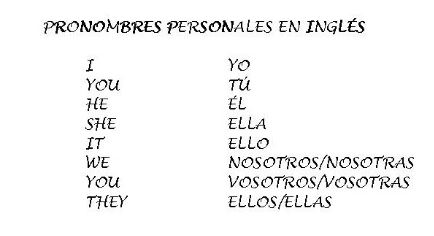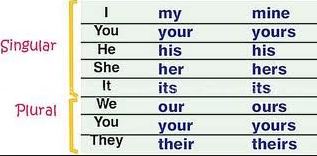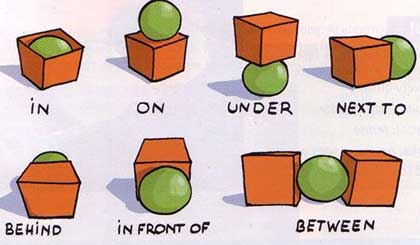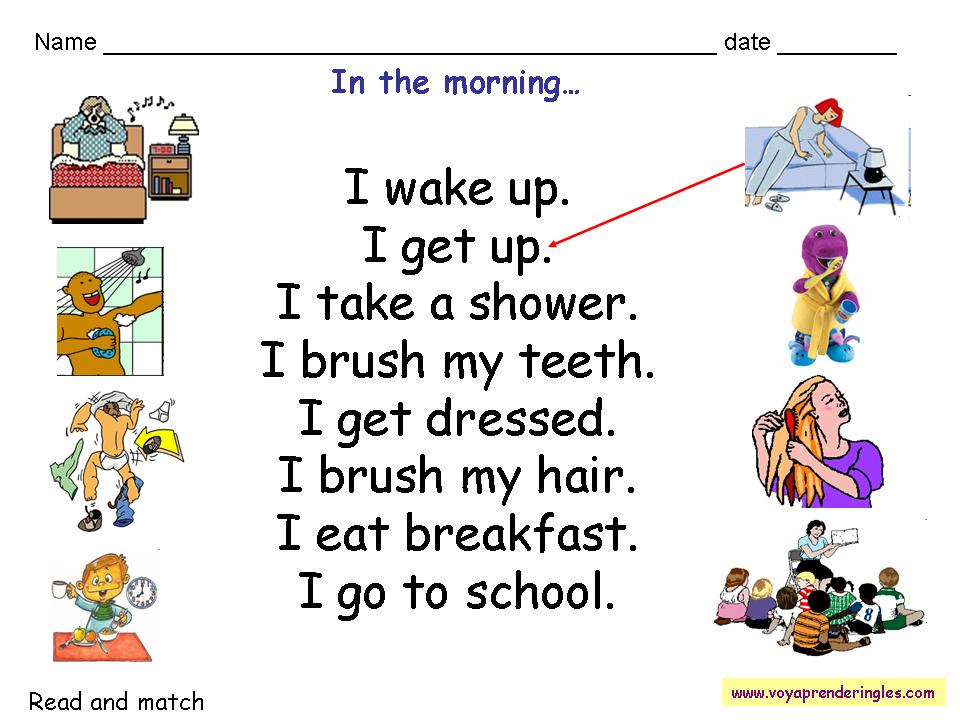
Pronombres Personales - Recursos Educativos en inglés
Gramática Inglesa - English Grammar
What are English personal pronouns?
Here is a table that provides an overview of the different forms that English personal pronouns can take.
- El pronombre personal sujeto no se omite nunca.
- La primera persona siempre se escribe con mayúscula: I.
Complement form
- me
- you
- him
- her
- it
- us
- you
- them
What are personal pronouns used for in English?
Personal pronouns are used to refer to people (including oneself) or to replace a noun or group of words already mentioned. The form of personal pronouns varies according to their function in the sentence. There is a difference between subject pronouns and complement pronouns.
When and how to use personal pronouns in English?
Personal pronouns of the 3rd person replace a noun mentioned above.
Example: I have a baby. He is very good and I love him very much.
To avoid misunderstandings, it is sometimes necessary to repeat the noun which the pronoun replaces.
The pronoun it can be used in impersonal constructions.
Example: It's raining.
The 1st person personal pronoun is used when you want to talk about yourself.
Examples: I have got a dog.
Subject or complement?
Personal pronouns are divided into two categories: subject personal pronouns and complement personal pronouns. When to use the subject form and when to use the complement form?
The subject of the verb corresponds to the question who is who (who is the one doing something?). The subject form is used when the pronoun is the subject of the sentence.
Examples: I would like to play the piano. - You make me feel bad.
The complement form is used when the pronoun is a direct or indirect object complement.
Example: I love her.
The complement form is also used after a preposition (here: in, for).
The gender of nouns
In English, there are three grammatical genders: masculine (he), feminine (she) and neuter (it). In the case of persons, the grammatical gender corresponds to the natural gender (she for a woman, he for a man). Objects and other inanimate objects are usually gender neutral. But there are some exceptions.
When we talk about an animal, we can use the masculine or feminine gender (he or she) if it has a particular character or if we are emotionally attached to it (a pet, for example).
Example: I have a dog, her name is Duna.
When we do not know whether it is a male or female, or when the character of the animal is not important to us, we can use the pronoun it.
Example: Look out, there's a spider! It came in through the window.
On the other hand, we can use the pronoun she to refer to a car, a boat or a country, but the pronoun It is more common.
Example: Look at that old sailing boat in the harbour, isn’t she/it fantastic!
----
¿Cuándo y cómo utilizar los pronombres personales en inglés?
Los pronombres personales de la 3ª persona sustituyen a un sustantivo anterior.
Ejemplo: I have a baby. He is very good and I love him very much.
Para evitar malentendidos, a veces es necesario repetir el sustantivo al que sustituye el pronombre.
El pronombre it puede utilizarse en construcciones impersonales.
Ejemplo: It's raining.
El pronombre personal de 1ª persona se utiliza cuando se quiere hablar de uno mismo.
Ejemplos: I have got a dog.
¿Sujeto o complemento?
Los pronombres personales se dividen en dos categorías: pronombres personales sujeto y pronombres personales complemento. ¿Cuándo utilizar la forma de sujeto y cuándo la de complemento?
El sujeto del verbo corresponde a la pregunta quién es quién (¿Quién es el que hace algo?). La forma de sujeto se utiliza cuando el pronombre es el sujeto de la frase.
Ejemplos: I would like to play the piano. - You make me feel bad.
La forma de complemento se utiliza cuando el pronombre es un complemento de objeto directo o indirecto.
Ejemplos: I love her.
La forma de complemento también se utiliza después de una preposición (here: in, for).
El género de los sustantivos
En inglés existen tres géneros gramaticales: masculino (he), femenino (she) y neutro (it). En el caso de las personas, el género gramatical corresponde al género natural (she para una mujer, he para un hombre). Los objetos y otros objetos inanimados suelen ser de género neutro. Pero hay algunas excepciones.
Cuando hablamos de un animal, podemos utilizar el género masculino o femenino (he or she) si tiene un carácter particular o si estamos emocionalmente unidos a él (una mascota, por ejemplo).
Ejemplo: I have a dog, her name is Duna.
Cuando no sabemos si es macho o hembra, o cuando el carácter del animal no es importante para nosotros, podemos utilizar el pronombre it.
Ejemplo: Look out, there's a spider! It came in through the window.
Por otro lado, podemos utilizar el pronombre she para referirnos a un coche, un barco o un país, pero el pronombre it es más común.
Ejemplo: Mira ese viejo yate en el puerto, ¿no es fantástico?
-
🔆 También te puede interesar:






